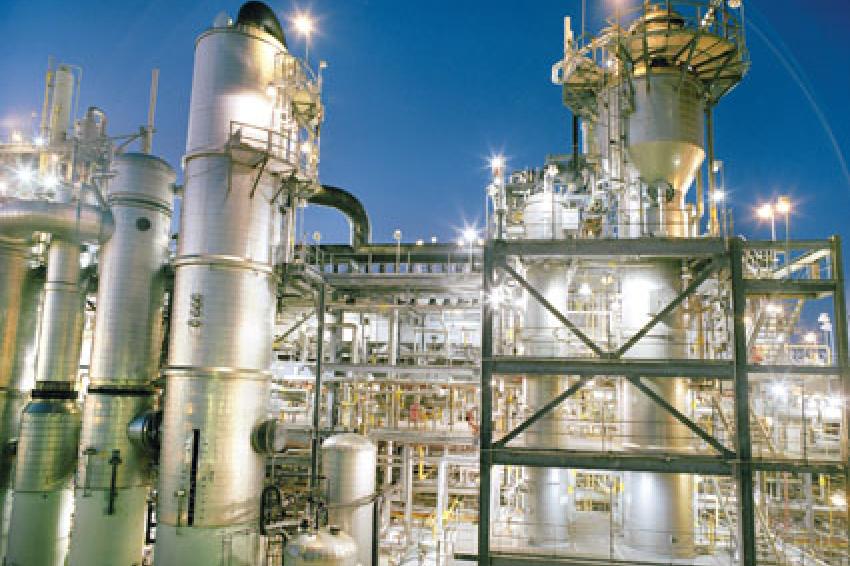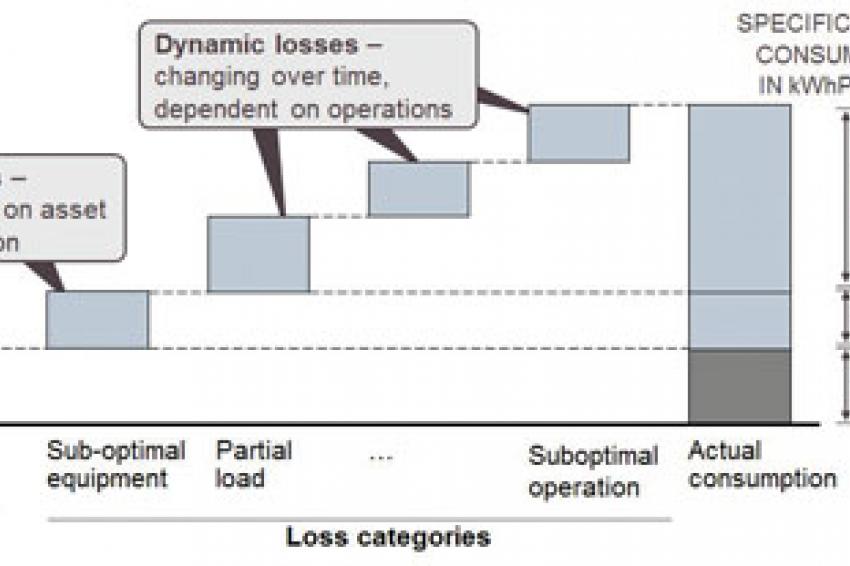Full Transparency To The Limit
Managing Energy Efficiency at Bayer
Fewer Emissions - Successful reduction of energy consumption and CO2 emissions requires a systematic approach. Since climate protection is a key element in its sustainability strategy, Bayer has developed and systematically implemented the "Bayer Climate Check" and the integrated energy management system STRUCTese (Structured Efficiency System for Energy).
In contrast to most state-of-the-art energy management systems that merely measure energy consumption STRUCTese allows a detailed measurement and tracking of energy efficiency, which provides full transparency about the status quo in each plant and the further improvement potential up to the limit of best available technology.
Based on the encouraging results that have been obtained with this methodology in the last three years, Bayer Material Science now has even raised its climate protection targets for 2020 and is thus continuing its ambitious approach.
Increasing Need to Optimize Energy Efficiency
The chemical industry as a large contributor to greenhouse gas emissions committed itself to reduce these emissions and to take environmental and social responsibility. Optimizing energy efficiency can provide a major contribution towards this goal. Beyond the global climate challenge, in the light of rising energy prices the reduction of energy costs has become a key lever to decrease the manufacturing costs.
Last but not least, there is also an increasing interest of governments in energy efficiency where some regulation has already started. In order to benefit from tax reliefs it is necessary to have an energy management system according to EN 16001 in place from 2013 on.
The Bayer Climate Program
For these reasons, Bayer positioned itself as a pioneer in climate protection with a global climate program in 2007 and ambitious targets for cutting greenhouse gas emissions. Bayer MaterialScience, which has the highest energy consumption of the Bayer sub-groups committed to reduce the specific greenhouse gas emissions by 25% in the period 2005 to 2020. In order to achieve these targets, the lighthouse projects "Bayer Climate Check" and STRUCTese were brought to life.
The Bayer Climate Check combines the quantification of specific CO2 emissions of industrial products with a Climate Footprint and a systematic screening for energy efficiency potentials in an energy efficiency check. The methodology follows internationally recognized standards, is based on the Six Sigma approach and has been certified by TUEV Sued.
The energy efficiency check helps to identify all potentials for energy savings in chemical plants and buildings. It starts with a systematic analysis of overall energy consumption and energy distribution of a plant. In the next step, improvement ideas are collected by means of equipment checklists, and best practices input of process experts and a brainstorming session together with the plant staff.
The full range of optimization levels including energy and utility supply, raw materials, heat integration, equipment, operational improvements, process design improvements and buildings and facility (fig. 1) is considered in the energy efficiency check. All improvement ideas are evaluated with regard to technical feasibility and profitability and prioritized for implementation by means of an energy savings portfolio (fig. 2).
STRUCTese - Managing Energy Efficiency
The rapid and sustainable implementation of the identified energy savings potentials often is a significant challenge due to various reasons: lack of time for energy efficiency measures in the daily business, reluctant approval of investments for plant modifications or energy efficiency being only a secondary objective behind yield, throughput and quality. The energy efficiency management system STRUCTese accelerates this process by raising awareness on all levels of the organization for the topic energy and integrating it into the daily workflow of production sites.
The Energy Loss Cascade
The Energy Loss Cascade (fig. 3) is the key element of the energy efficiency management system STRUCTese. Beyond simply measuring energy consumption the energy loss cascade allows the quantification and tracking of energy efficiency. The plant energy optimum on the left side of the cascade represents the minimum specific energy consumption to produce the desired product at the given site and available infrastructure. This important benchmark sets the ultimate energy efficiency target for the existing plant.
The gap between the actual consumption of the plant and the plant energy optimum is divided into several loss categories, which allow visualizing different sources of energy efficiency losses and identify the key levers for energy efficiency improvement. This approach achieves an unmatched level of transparency in the management of energy efficiency.
The loss category "sub-optimal equipment" comprises all investment projects identified in the Bayer Climate Check and thus shows, where improvements can be achieved most effectively. Several dynamic loss categories are distinguished, visualizing efficiency losses due to operational aspects such as partial load or sub-optimal operation.
Since the distribution of dynamic losses over the different loss categories is determined with an automatic system, the energy loss cascade can be continuously updated in any desired time interval. In combination with suitable KPI's this represents an ideal tool for energy efficiency target setting and transparent control throughout all levels of the management.
The loss cascade is supplemented by further measures that create awareness for energy efficiency on all levels of the organization. A real-time energy efficiency monitor enables the plant operator to improve energy efficiency continuously through optimal process operation. Daily energy protocols summarize average energy consumptions and energy relevant process parameters of the last 24 hours for the discussion in every morning meeting of the plant team. With this integrated approach, the whole company is oriented towards energy efficiency from the upper management to the plant operator.
Bayer Material Science Stretched Its Climate Targets
The rollout of STRUCTese at Bayer has commenced in 2009 and included already 32 plants at the end of 2010. The rollout will be completed by the end of 2012 and will comprise about 60 plants. Up to the present, a reduction of energy consumption by 550000 MWh and annual CO2 emissions by 135000 tons has been realized. Ultimately, Bayer Material Science expects to realize an annual CO2 emission reduction of 700,000 tons by energy savings.
Based on the encouraging results throughout the STRUCTese roll-out so far, Bayer Material Science has just recently stretched its climate target from 25 to 40% reduction of specific CO2 emissions until 2020 compared to the 2005 baseline.
Energy Efficiency Management is available for the whole process industry
The Climate Check and STRUCTese methodologies have been developed by Bayer as a means to assure that the ambitious targets of the Bayer Climate Program will be achieved, but are offered to external customers as well. Being designed for world-scale energy-intensive chemical production processes right from the start, the methodology is currently extended in a public funded project towards a universal management and benchmarking standard for energy efficiency suitable for any kind of production facility in the process industry.









